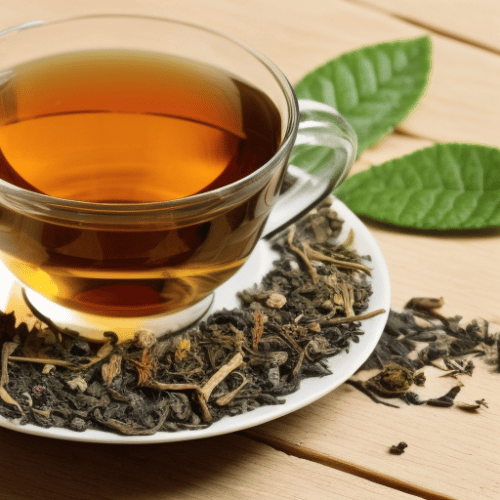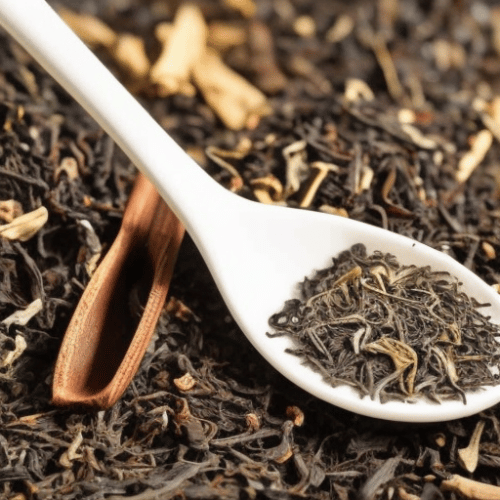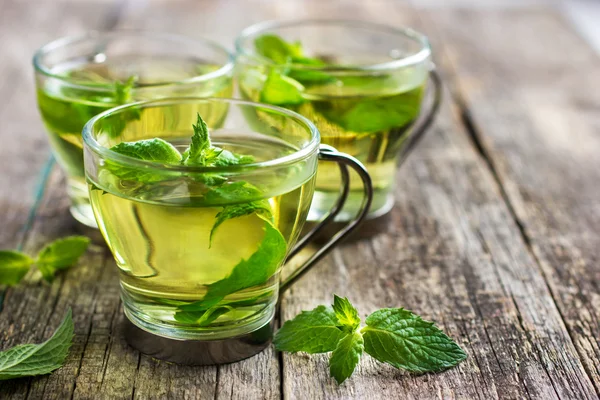Last Updated on
Making tea without a kettle is an art. But it’s not impossible. If you’re looking for the perfect cup of tea, but don’t have access to your trusty old kettle – fear not. We’ll show you how to make tea without a kettle. From boiling water in alternative ways and choosing the right type of teabag or loose leaf blend, through to brewing basics that will ensure your cuppa tastes just as good as if made with a kettle – we’ve got all the advice needed here so read on and get ready for some refreshingly tasty hot beverages sans any need for electricity.
Table of Contents:
- Boiling Water Without a Kettle
- Choosing Your Tea
- Brewing Basics
- FAQs in Relation to How to Make Tea Without a Kettle
- Conclusion
Boiling Water Without a Kettle
Boiling water without a kettle is not as difficult as it may seem. There are several ways to heat up your water, depending on what you have available in the kitchen.
Stovetop:
The most common way to boil water without a kettle is by using a stovetop pot or pan. Simply fill the pot with cold tap water and place it over medium-high heat until it reaches boiling point (212°F). Be sure to stir occasionally while heating so that all of the liquid gets heated evenly. Once boiling, remove from heat and let cool before use.
Microwave:
If you have access to a microwave oven, this can be an easy way to quickly boil water without having to wait for it on the stovetop. Place 1 cup of cold tap water into a microwave-safe container and set your microwave power level at high for 2 minutes or until the boiling point has been reached (212°F). Be sure not to leave it unattended during this process since microwaves can cause explosions if left running too long. Let cool before use.
Electric Hot Plate:
Another option for those who don’t have access to either a stovetop or microwave is an electric hot plate. This device heats up liquids much faster than traditional methods but should still be monitored closely due to its potential danger of overheating or causing fires if used improperly. To use an electric hot plate, simply fill your pot with cold tap water and turn on the device at the medium-high temperature setting until the boiling point has been reached (212°F). Once boiled, turn off immediately and let cool before use.
With a few simple steps, you can easily boil water without a kettle – and now that you have the hot water ready, it’s time to select your favourite tea for an enjoyable cup.
Choosing Your Tea
When it comes to choosing the right tea, there are a few things to consider. The type of tea you choose will depend on your taste preferences and desired health benefits. Here’s an overview of some popular types of teas:
Black Tea:
Black tea is one of the most common varieties available and has a strong flavour that many people enjoy. It contains caffeine, so it can give you an energy boost when consumed in moderation. Some studies suggest that black tea may have antioxidant properties as well as potential heart-health benefits.
Green Tea:
Green tea is another popular variety with a milder flavour than black tea. It also contains caffeine but usually, less than black tea does, making it ideal for those who want an energy boost without too much stimulation from the caffeine content. Studies show that green tea may offer numerous health benefits such as improved brain function and reduced risk of certain diseases like cancer or diabetes due to its high levels of antioxidants and polyphenols.
White Tea:
White tea is made from young leaves which gives it a light colour and delicate flavour compared to other teas like green or black teas. It also has lower levels of caffeine than other types, making it perfect for those looking for something calming yet energising at the same time. Studies suggest white tea may help reduce inflammation in the body as well as provide protection against certain diseases due to its high antioxidant content.
Herbal Teas:

Herbal teas are made from herbs rather than actual “tea” leaves so they don’t contain any caffeine at all. They come in various flavours depending on what herbs are used such as chamomile, peppermint, ginger root etc., each offering their own unique set of health benefits ranging from improved digestion to relaxation effects due to their natural compounds found within them.
With so many teas to choose from, it’s important to pick the one that best suits your taste. Now let’s move on to brewing basics and learn how we can make tea without a kettle.
Brewing Basics
Brewing tea is an art form that has been practised for centuries. It’s a simple process, but there are some key steps to follow in order to get the best cup of tea possible.
Water Temperature:
The water temperature is important when brewing tea because it affects how much flavour and caffeine will be extracted from the leaves. Generally speaking, black teas should be brewed with boiling water (212°F/100°C), while green and white teas should be brewed at lower temperatures (170-185°F/77-85°C). Oolong teas can also vary depending on their type, so check your package instructions or do some research online if you’re unsure what temperature to use.
Steeping Time:
Steeping time is also important when making tea as it affects both taste and caffeine content. For most types of black teas, 3-5 minutes is ideal; however, this may vary depending on the specific type of tea you’re using. Green and white teas usually require shorter steeping times—2-3 minutes—while oolongs tend to fall somewhere in between (3-4 minutes). Again, refer to your package instructions or do some research online if you’re not sure about a particular type of tea’s recommended steeping time.
Amount of Tea Leaves:

How much loose-leaf or bagged tea you use depends on how strong you like your brews. As a general rule of thumb, 1 teaspoon per 8 ounces (1 cup) should suffice for most types of black and herbal teas; green and white varieties often require less—about half a teaspoon per 8 ounces—while oolongs may need slightly more than that amount due to their larger leaves size. If you doubt how much loose leaf or bagged tea you need for each cup size, start off by using 1 teaspoon per 8 ounces until you find the right balance for your tastes.
FAQs in Relation to How to Make Tea Without a Kettle
What can I use instead of a tea kettle?
If you’re looking for an alternative to a tea kettle, consider investing in an electric water boiler. This appliance can quickly heat up large amounts of water with the press of a button and is great for making hot drinks like tea or coffee. It also has adjustable temperature settings so you can get your desired beverage just right. Plus, it’s safer than using a stovetop kettle as there’s no risk of boiling over or burning yourself on hot surfaces. With its convenience and safety features, an electric water boiler could be the perfect replacement for your traditional tea kettle.
How do I make tea without a teapot?
Making tea without a teapot is easy and requires just a few simple steps. First, boil some water in a pot or kettle. Next, add your desired amount of loose-leaf tea to an infuser or strainer and place it into the boiling water. Allow the tea to steep for 3-5 minutes before removing the infuser or strainer. Finally, pour your freshly brewed cup of tea and enjoy. With this method you can make delicious cups of tea without needing any special equipment – all you need is hot water and your favourite type of loose leaf tea.
Conclusion
Whether you’re using the stovetop, microwave or even just hot water from the tap, you’ll have your cup of tea in no time. With these tips and tricks on how to make tea without a kettle, choosing your favourite type of tea and understanding brewing basics, you’ll be able to make tea without a kettle like an expert. So next time you don’t have access to a kettle, remember that making tea doesn’t have to be difficult – all it takes is some creativity and patience. Now go ahead and enjoy that perfect cup of tea made without a kettle.
Paul is the type of person who never met a problem he couldn’t fix. He can always be found tinkering with something in his house, even if it isn’t broken! His tips and tricks are often shared on our site. He’s the one you call when something breaks because he has been known to improvise fixes for everything from leaky faucets to malfunctioning dryers.



